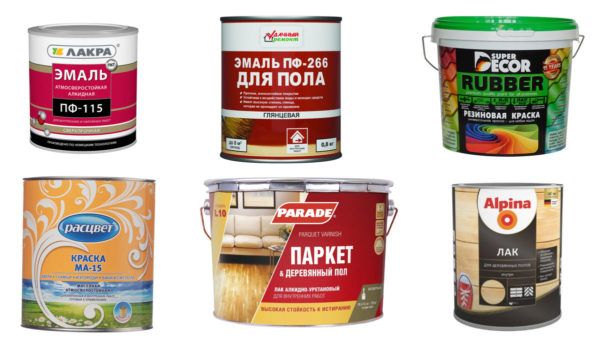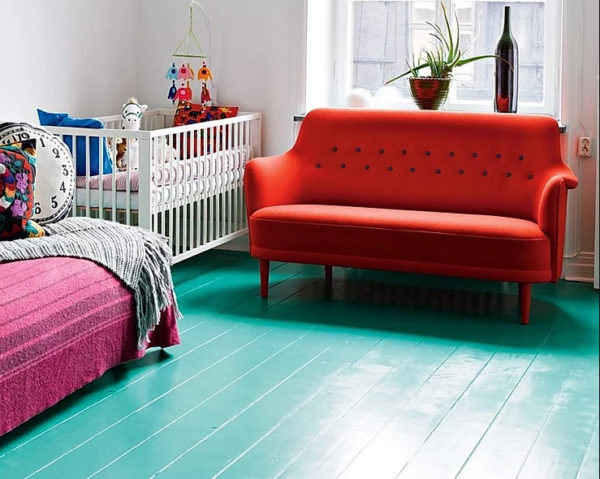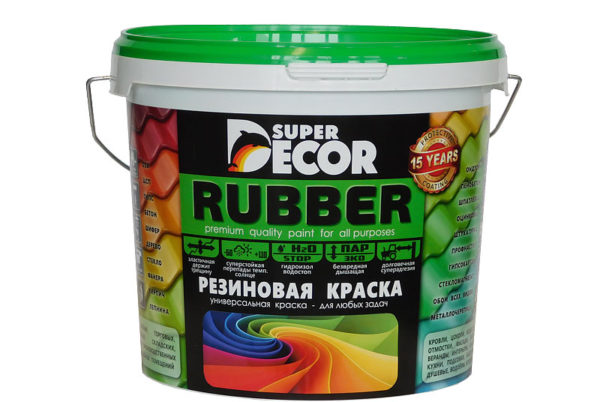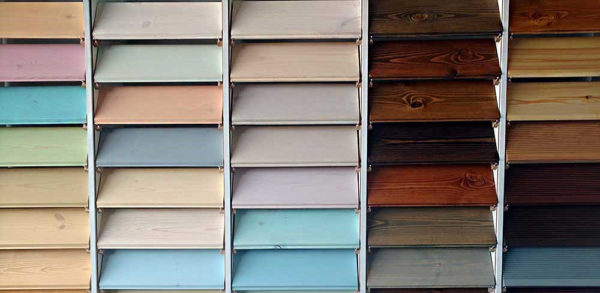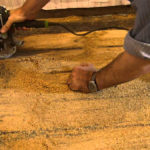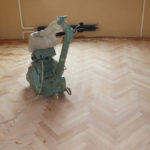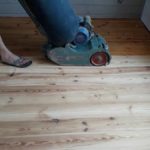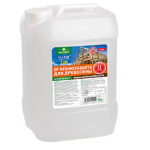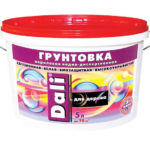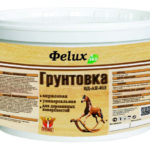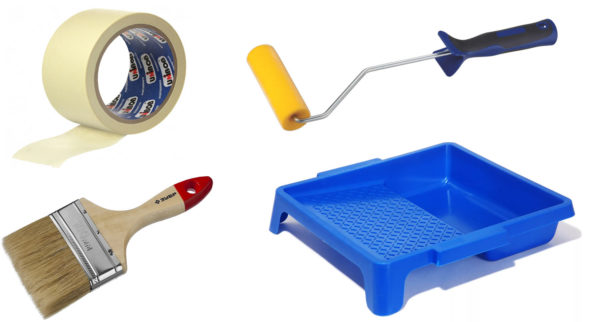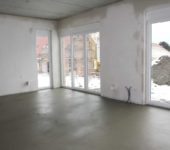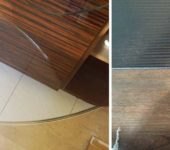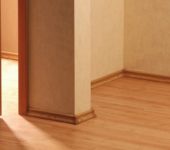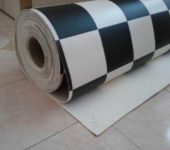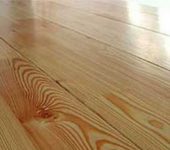How to paint a wooden floor - materials, work sequence
Modern finishing technologies offer dozens of options for decorating the floor - practical and durable, and design ideas for a stylish floor are truly delightful. However, one of the classic methods - painting a wooden floor, does not lose its relevance, making the color of the flooring match the interior or highlighting it.
In apartments and private houses, lacquer coatings are also used to emphasize the beauty of the board with its natural pattern, and different types of paints, depending on the goals and objectives.
The main thing is to choose the right type of paint or varnish so that the coating is combined with the wood in terms of technical parameters, performing its functions perfectly. We will tell you in detail what paint to choose and how to paint the floor with a high quality result.
The content of the article
Useful theory - why you need to paint floors
The natural properties of wood make this material soft and vulnerable, provoking rapid destruction of the structure under the influence of external factors. Therefore, the board requires additional protection. The key task of paint for a wooden floor is to protect the material from moisture penetration, prevent rotting, mold and mildew.
Country houses have long ceased to serve as a kind of warehouse or one-time resting place for those who are tired of living in a city apartment. Therefore, they began to approach the dacha interior in detail, the design of country houses turned into an independent design unit, where every element is important, including the choice of paint for floor coverings.
Why is it important to paint the floor:
- the painted board is protected from moisture, so it does not dry out;
- paint poses a barrier against the development of microorganisms, extending the real life of the floor;
- the painted surface makes it easier to care for it (the smooth coating is quickly cleaned of dirt);
- under a layer of paint the wood is protected from temperature extremes.
Paints and varnishes make it possible to make the interior original, opening up hundreds of ideas for options for drawing, ornaments and colors.
Types of paint - which one to choose
There are two main types of coatings - paints and varnishes, so you first need to decide on this category.
What is the difference:
- Transparent mixtures - varnishes. They have a qualitatively different composition, but they fulfill a common task: varnish for a wooden floor forms a transparent film on the surface that serves as protection from external influences. Does not paint over the tree, keeping its color and texture.
- Coloring mixtures - different types of paints. They are selected for a specific purpose, depending on the composition. Floor paints form a dense film on the board, which completely colors the wood in the selected color.
Choose high-quality compounds, since saving on the coating, which will constantly experience external influences (starting with walking, ending with washing), will rather quickly lead to regular costs - on bringing the wooden floor to its proper form.
What varnish to choose for a wooden floor
If wood flooring is planned for well-heated rooms (all year round), a water-based coating for interior work is suitable.This varnish is easily applied to wood, but, most importantly, it is distinguished by the absence of an unpleasant odor. An excellent option for cottages and summer cottages, the premises of which do not suffer from temperature extremes and high humidity.
In other cases, it is better to give preference to compounds for outdoor use. These varnishes have strong protective properties that will protect wood in cold and damp conditions. Thanks to the durable film that forms on top of the board, the floor covering will last longer than water-based counterparts.
There is another type of colorless floor covering not related to varnishes - this is oil. The modern blend protects the board without changing color and enhances the texture. Oil is good for parquet or hardwood flooring. However, this is still not paint.
What paint to choose for a wooden floor
Unlike varnishes, the range of paints is much wider. Here you can choose the optimal combination of coatings that will last a long time and at the same time retain their effectiveness.
Types of paints depending on the composition:
- Oil... The classics of the past are rarely used today. The mixture dries for a long time (5+ hours), spreads a pungent smell throughout the house. Cracks relatively quickly, starting to fly around (especially in conditions of unstable air temperature).
- Acrylic floor paint... One of the safest and most durable options. It is produced on a water basis, therefore the key purpose is internal work. The paint does not produce a strong unpleasant odor. Resistant to abrasion and fading, creates a good protective coating for the board.
- Enamel and alkyd paint... They have a pungent smell, but represent the cheapest way to paint the floor in an apartment or private house. Creates a strong, durable coating.
- Polyurethane... Differs in the strength of the coating, resistant to deformation. Serves up to several years without getting covered with small cracks. It is more often used for painting outdoor premises (gazebos, verandas, etc.).
- Rubber floor paint for wood... A relatively new type of coating containing a large amount of rubber polymers. Creates a dense latex coating on the surface in matte colors. Visually reminiscent of rubber, perfectly protects the board. Resistant to abrasion, non-slip.
Floor paint intended for outdoor use can be used at the same time to treat indoor spaces. This will allow you to forget about painting for several years, due to the strong components in the mixture, which will preserve the integrity of the wood and visual appeal.
In contrast, interior paint is impractical for outdoor use. Improper use will soon render the coating unusable (especially water-based formulations).
For painting a garage or facade, look at universal formulations, or choose paints exclusively for outdoor use. They are distinguished by high wear resistance, therefore they can easily endure frosts, an abundance of summer precipitation or the scorching sun.
Give preference to paints with polyurethane in the composition - it makes the coating durable, suitable for use in rooms with high humidity.
When choosing how to paint a wooden floor in an apartment or a veranda in the country, do not forget about the fading of the coatings. For example, a varnish will retain a decent look for an average of 2 years with constant exposure to direct sunlight. The paint (depending on the type) will last about 7-10 years.
Paint colors - main categories
Paints and varnishes offer a truly wide range of colors, so in the store you can find almost any color and variations of its shade. Color tints, which can be mixed with each other, to achieve the desired shade, facilitate the task.
In addition to the palette, there are main categories that define the final surface:
- satin;
- matte;
- glossy;
- semi-glossy.
Depending on this property, the coating is distinguished by high gloss or, on the contrary, its absence.
When deciding how to paint a wooden floor in a house, do not forget about the purpose of the paintwork! Choose paints designed specifically for floors - they are the most resistant to abrasion.
Floor treatment before painting is the basis of a quality coating
Surface preparation is done in two stages. The first one is cleaning the board from the previous layer of paints and varnishes. It is important here to make the wood smooth by removing even small particles.
- Removing old paint and leveling the floor
- Treatment of old parquet before varnishing
- Leveling the wood floor
If, during operation, cracks, notches or chips have formed on the floor surface, they are carefully rubbed and cleaned. Large gaps must be sealed with a putty followed by grouting to make the plane smooth.
When processing wood before painting, in addition to the primer, it is advisable to apply insecticidal or antiseptic impregnation - these are special compounds that protect wood from fungi, mold and small pests.
At the second stage, the floor is washed well, cleaning it from dirt and dust, and left to dry (at least 2-3 hours are allocated for drying). Subsequently, a dry, clean and smooth floor is treated with a primer - this reduces the consumption of paint and varnish material, and it becomes easier to apply paint (adhesion to the board is enhanced).
Choose your primer mix carefully - it should match the type of paintwork. Read the instructions on the packaging or ask the seller for advice on the compatibility of the compositions.
- Fire retardant primer
- Just a primer for wood
- Universal primer for wood
The approach to the treatment of the floor is somewhat different if the plans include a varnish coating. Here it is necessary to polish the surface of the boards with the highest quality, achieving perfect smoothness. After the boards are primed, moving along the grain of the wood, and proceed to applying varnish.
Tools
With large surfaces it is faster and more economical to work with a roller, but you will also need a regular paint brush. A roller cannot be used to paint near walls and in corners. Therefore, it is better to walk in hard-to-reach places with a brush, and then use a roller.
If your walls are not painted or pasted over with wallpaper, then you don't have to worry too much and get to work. But if necessary to protect the walls, you will need to purchase masking tape and glue them over, and after completion of the work remove it.
To impregnate the roller with paint, it will not hurt to buy a paint bath. Of course, you can get by, for example, with a cropped water bottle, but the bath is more practical and more convenient.
How to paint wooden floors
The first step is to paint the skirting boards, as well as all areas that are inaccessible to the roller. After that, you can safely proceed to painting the floor surface, moving towards the exit.
After applying the first coat, it is important to let the paint dry completely, then apply the second coat. As a rule, staining in two steps allows you to achieve a stronger, denser coating.
Painting a wooden floor with varnish is slightly different. It is also applied in two layers, but the goal is not density, but smoothness of the coating. The first layer of varnish penetrates the wood structure, slightly lifting the microfibers - the effect is manifested in the form of roughness.
Note! When buying paints and varnishes, fix the item number. If it is not enough, the seller will be able to pick up an identical shade according to the article.
Therefore, you need to wait until the varnish is completely dry, sand again, then apply a second - final - layer.The work is carried out with a wide brush with soft bristles, applying varnish along the boards. In the process, it is necessary to remove hairs from the floor that have separated from the brush so that the painted floor looks flawless.
Coating Compatibility
Hardly anyone thinks about compatibility when choosing a varnish for a parquet floor or a paint for unheated rooms. However, the compatibility of the paint and varnish material and the surface for its application is one of the rules for high-quality painting.
So the compatibility:
- Acrylic paint "fits" well on all previous coatings.
- Alkyd "does not conflict" with oil, so the first can be applied over the second.
- Polyurethane - give excellent results only in combination with each other.
As a rule, the manufacturer prescribes such nuances on the packaging, so take a closer look at the description. You will spend a little more time choosing floor paint, but the excellent result is definitely worth it!

